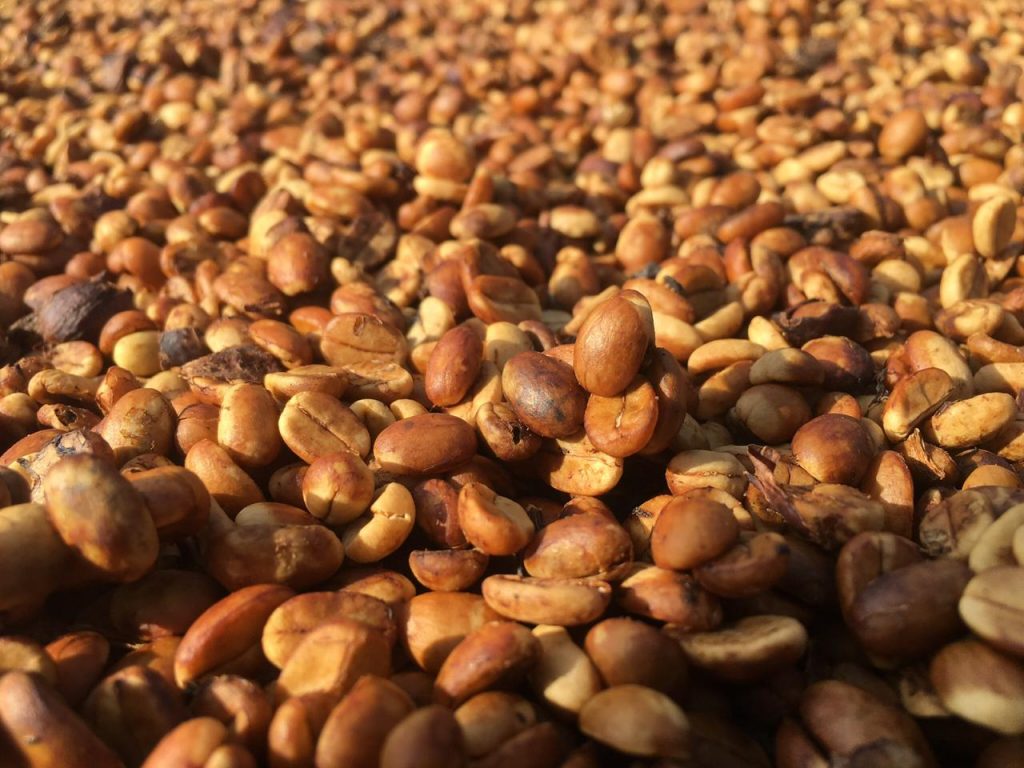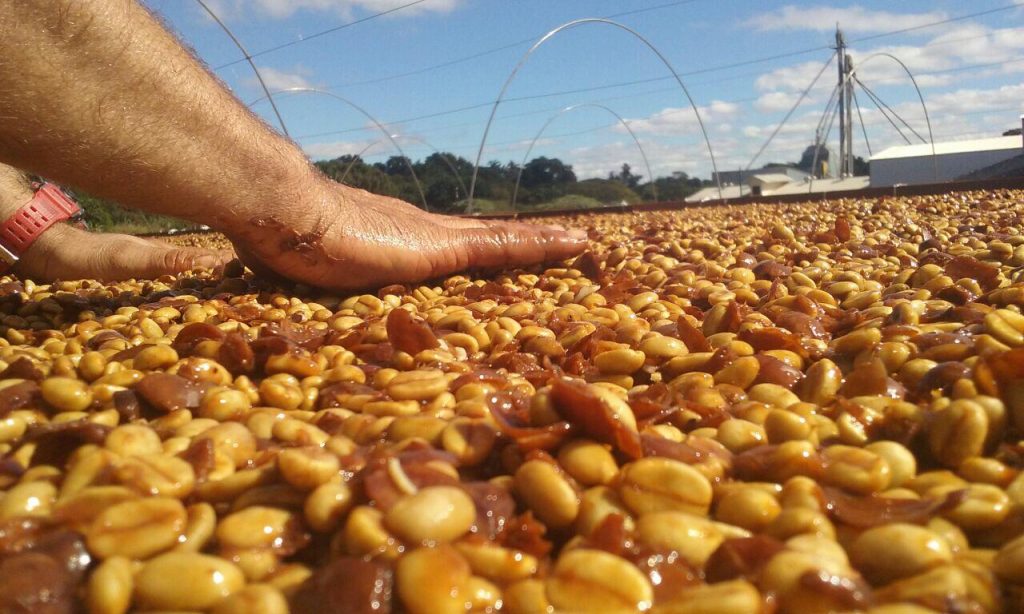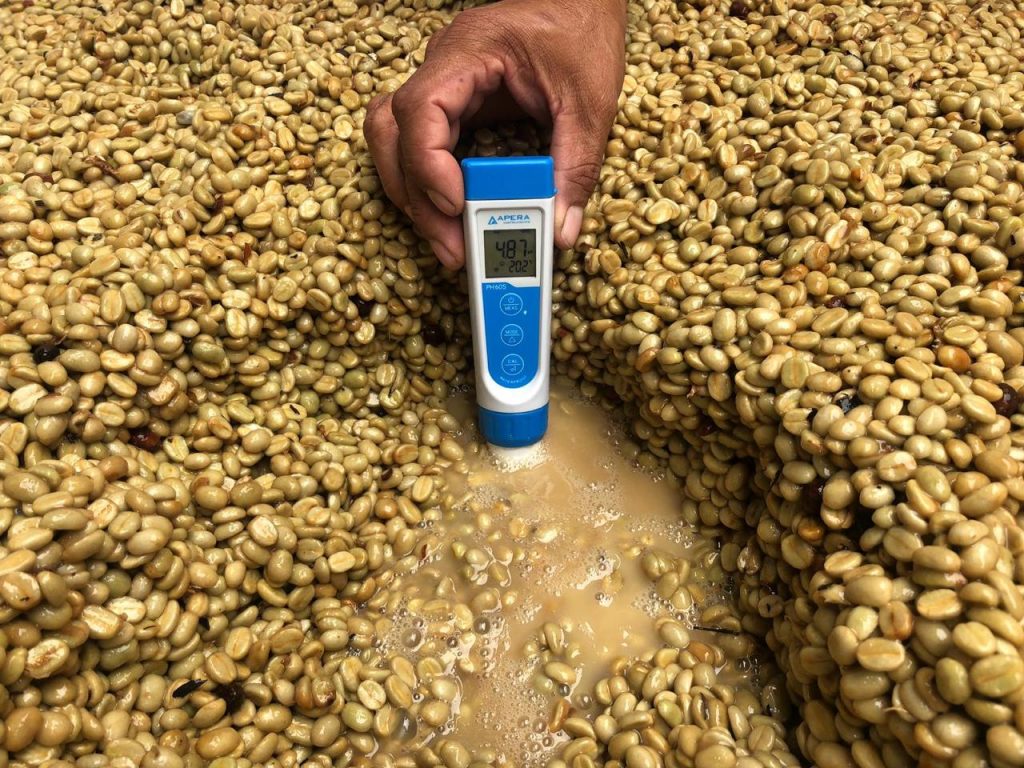How to ensure the consistency and quality of coffee fermentation? why do coffee treatments have to be fermented?

Bread, wine, cheese, yogurt, chocolate, coffee: what do all these delicious foods have in common? Ferment
In coffee, fermentation is very important. It can not only remove mucus, but also affect many tastes and sensory properties. Controlling coffee during processing means you can improve quality and consistency.
But fermentation is complex and managing at the farm level can be a challenge. To learn more about how producers deal with this problem, I interviewed experts from Lallemand, a company that specializes in food and beverage fermentation, and some of its partners.
What is fermentation in coffee?
Fermentation is a natural process in which microorganisms such as Saccharomyces cerevisiae and Lactobacillus consume and metabolize compounds such as sugars and acids in cherries. As a result, these compounds are broken down into acids and alcohols.
But why are we fermenting coffee? First of all, for washed coffee, non-mechanical mucus removal is necessary.

Yeast has different effects on the quality of coffee, feeling acidity and specific fruity or floral aromas from the mouth. During the fermentation or impregnation of coffee, yeast degrades the mucus in coffee beans, a type called debonding. Fermentation is important because it affects the taste and aroma produced in the cup.
Mucus consists of sugars, amino acids, precursors of aroma, etc. Therefore, if you want to reveal and express the potential aroma in beans, you must pay attention to it.
Remember how sugars and acids decompose during fermentation? These identical reactions make up the flavor. If sugars and acids are decomposed under controlled conditions within an appropriate temperature and time frame, the flavor and aroma produced in beans will be more ideal.
Good and bad coffee fermentation
Through good fermentation, you can get the characteristics of coffee. In other words, good fermentation will not improve the quality of coffee, because coffee already has the quality of on-site production. But we can draw and maintain these features from the scene. But fermentation is not always good. Bad fermentation will reduce or lower the quality of coffee.
In the over-fermented coffee, what we find is the taste of the wine, but the bad wine. Even before he drank the coffee, he could recognize the signs of overfermentation: the coffee beans were reddish and the rotten fruit gave off an unpleasant aroma.
For these reasons, the treatment station must understand the fermentation and control it as much as possible.

Consistency: almost as important as quality
Consistency is also critical to entering the market and seeing repeat purchases. If you do not have a consistent product, it is very difficult to establish a long-term relationship. Imagine if the buyer returned to the producer after buying beautiful coffee. Maybe buyers will expect their coffee to be of the same quality for the second time. But they didn't get the coffee they expected.
As a result, you start an unsustainable relationship, the client will no longer receive your coffee, and it is very difficult and expensive for you to close the door and open it again.
One of the reasons why fermentation is so challenging is that it is the result of chemical reactions between microbes such as bacteria, yeasts and fungi. And, according to Lallemand LALCAFE, the garbage is almost everywhere: soil, fruits and berries, and spores in the atmosphere. Under different circumstances, their reactions will change, regulating the flavor and aroma of coffee beans in different ways.
However, the consistency of fermentation can be achieved. It's not random. In short, you must define and control certain aspects to achieve more repeatability, and repeatability will lead to [the same] cup profile. "
How to ensure the consistency and quality of fermentation
So, what factors should producers pay attention to to control fermentation and ensure consistent coffee quality?
1. Cherry quality
The quality of the harvest is crucial. "the quality of raw materials or cherries is very important. Fermented yeasts can only work with available substances to reveal or enhance certain aromatic compounds because their metabolic processes are different. Plants need minerals, nitrogen and amino acids. The only way to provide this method is to develop a health plan to reduce stress and [create] better conditions to grow and develop cherries. "
So you need to apply everything in the field to produce quality cherries, and when I say everything, it's absolutely everything: taking care of plant nutrition, plague and disease management, as well as water, shade and pruning.
two。 Cleanliness
Microbes are everywhere, and not all of them are suitable for your coffee. Microbes as well as soil, harvesting materials, workers' hands and infrastructure for transport, reception and processing have been attached to its surface. These can lead to pollution.
Although it is impossible to have a farm or factory free of microbes, cleaning can help a lot. The sink should be cleaned after use. The same should be true of all tools used.
3. Existence of oxygen
There are two types of fermentation: aerobic fermentation and anaerobic fermentation.
In aerobic fermentation, there is oxygen, which contributes to the respiration and growth of microorganisms. Aerobic fermentation is a conventional fermentation method. However, you have less control over what happens during fermentation.
This is because microbes are everywhere, and oxygen affects their growth in ways that are difficult to predict and control.
In anaerobic fermentation, Maurizio (Mauricio) explains that coffee is usually placed in closed tanks without oxygen and carbon dioxide release valves. This allows manufacturers to better control the chemical reactions that take place.
4. Microorganism and yeast type
Different yeasts and microorganisms have different effects on the fermentation process. For example, Lallemand LALCAFE uses Saccharomyces cerevisiae in all products. However, depending on the strain used, the effect of yeast on coffee may be different: people can "enhance the fruit flavor (apricot, passion fruit, flower, vanilla), coffee taste and final cup quality;" the other is "brightness and citrus flavor." [and]-medium taste; "and the third is" usually gives priority to processing time and efficiency. "
Maurizio also told me that he had been experimenting with Lallemand LALCAFE yeast. In his experiment, the added yeast overcame local or local microbes in the fermentation process, resulting in more controllable fermentation.
When you use microbes in a crowd filled with a fermentor, you can get more consistency and a cleaner cup profile than fermentation in a random process, and you don't know what really affects fermentation.
5. Time and temperature
These two factors are important because the temperature affects the fermentation rate. When the fermentation process in the bean is below 20 °C, I can ferment for up to 36 hours.
On the other hand, at higher temperatures, he told me that fermentation tends to be faster-often too fast. It is possible that after 24 hours, I have encountered some problems, which will appear in the form of defects in the cup.

6. Data and records
Without recording data and processes, it will be difficult to follow the same protocol in the future. Every piece of data is useful, from the temperature of the harvest season to the time of the day when the coffee is harvested and the time of the fermentation process.
Be sure to measure the pH value, which indicates that your coffee is acidic. Record your Bailey sugar level, which will tell you not only the amount of sugar in your coffee, but also the amount of substrate or food eaten by bacteria and yeast.
If I don't have data or process, or if I don't know the background, then I can't do it again. Therefore, in order to achieve repeatability, you must undoubtedly measure and know how variables behave in the process.
Moreover, you must absolutely understand the temperature flux or behavior during fermentation, the dynamic changes in sugar content during fermentation and the dynamic changes in mucus acidity during fermentation, because based on this, you can make decisions or even stop the fermentation process.
Reproduced from Perfect Daily Grind
Important Notice :
前街咖啡 FrontStreet Coffee has moved to new addredd:
FrontStreet Coffee Address: 315,Donghua East Road,GuangZhou
Tel:020 38364473
- Prev

How to make Afu Jiadu Coffee must you add Vanilla Ice Cream? do you eat Afu Jiaduo correctly?
Afujiaduo is a hot and cold food that can be used in many specialty coffee shop menus and restaurants. It is a rich creamy mixture of two distinct flavors. Although it is usually considered a dessert, some people do believe that this counterfeit is a drink. It originated in Italy, but can now be found all over the world
- Next

The Creative drink making method of Coffee and Cocktail Coffee from Costa Rica can make Creative Coffee
This cocktail does its best. Named after its main ingredient-coffee from the Tarazu region of Costa Rica-this is a fruity drink that contains unusual ingredients such as carao honey and jacoticaba wine. For those of us who do not have sufficient access to these anaerobic beans and niche ingredients, this formula can almost be made naturally.
Related
- Beginners will see the "Coffee pull flower" guide!
- What is the difference between ice blog purified milk and ordinary milk coffee?
- Why is the Philippines the largest producer of crops in Liberia?
- For coffee extraction, should the fine powder be retained?
- How does extracted espresso fill pressed powder? How much strength does it take to press the powder?
- How to make jasmine cold extract coffee? Is the jasmine + latte good?
- Will this little toy really make the coffee taste better? How does Lily Drip affect coffee extraction?
- Will the action of slapping the filter cup also affect coffee extraction?
- What's the difference between powder-to-water ratio and powder-to-liquid ratio?
- What is the Ethiopian local species? What does it have to do with Heirloom native species?

